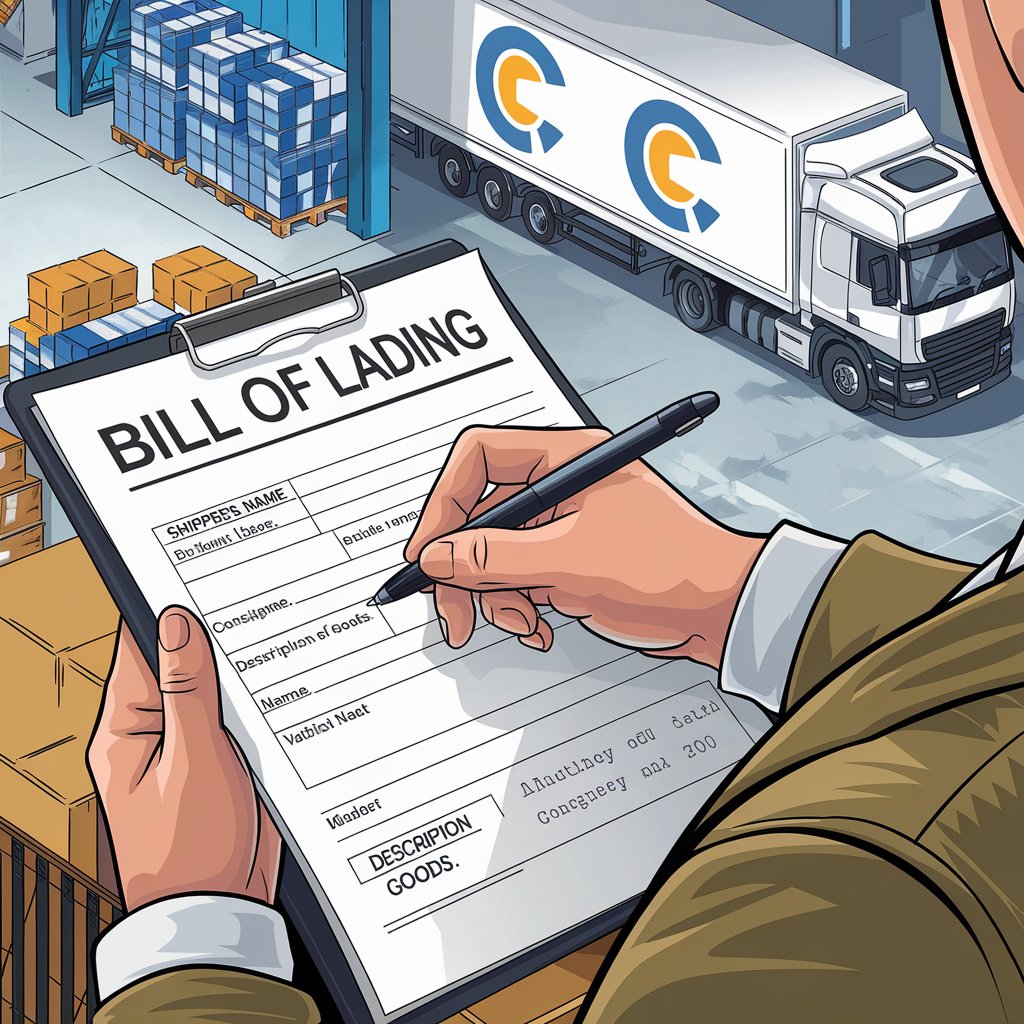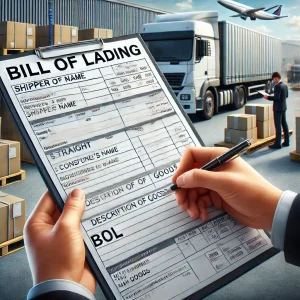Straight Bill of Lading (BOL): The Ultimate Guide for Shippers in 2024

What is a Straight Bill of Lading?
A Straight Bill of Lading (BOL) is a non-negotiable document used in the transportation of goods. It serves as a receipt of goods, a contract of carriage, and a document of title. Unlike a negotiable BOL, a straight BOL is consigned directly to a specified person or company and cannot be endorsed or transferred to another party.
Key Features of a Straight BOL:
- Non-negotiable
- Consigned to a specific recipient
- Cannot be transferred to another party
- Widely used in domestic shipments
Why Use a Straight Bill of Lading?
Straight BOLs offer several advantages for shippers:
- Simplicity: They’re straightforward and easy to use, especially for routine shipments.
- Security: Since they can’t be transferred, there’s less risk of fraud or theft.
- Efficiency: They streamline the delivery process, as the consignee is clearly specified.
- Cost-effectiveness: Generally, they’re less expensive to process than negotiable BOLs.
Components of a Straight Bill of Lading

A typical straight BOL includes the following information:
- Shipper’s name and address
- Consignee’s name and address
- Date of shipment
- Description of goods
- Quantity of goods
- Weight of goods
- Freight classification
- Special instructions (if any)
- Carrier’s name and signature
- Shipper’s signature
How to Fill Out a Straight Bill of Lading
Filling out a straight BOL correctly is crucial for smooth shipping operations. Here’s a step-by-step guide:
- Shipper Information: Enter the full name and address of the company sending the goods.
- Consignee Information: Provide the full name and address of the recipient.
- Shipment Details: Include the date, number of packages, and description of goods.
- Weight and Measurements: Enter the total weight and dimensions of the shipment.
- Special Instructions: Note any specific handling or delivery instructions.
- Signatures: Ensure both the shipper and carrier sign the document.
Straight BOL vs. Other Types of BOL
Understanding the differences between a straight BOL and other types is important:
Type of BOL | Negotiability | Primary Use |
Straight BOL | Non-negotiable | Direct shipments to known consignees |
Order BOL | Negotiable | International trade, allows transfer of ownership |
Bearer BOL | Negotiable | Rare, highest risk, possession equals ownership |

Common Mistakes to Avoid with Straight BOLs
- Incorrect consignee information
- Incomplete or inaccurate goods description
- Missing signatures
- Failure to note special handling instructions
- Incorrect freight classification
Digital Straight Bills of Lading: The Future of Shipping
As the logistics industry evolves, digital BOLs are becoming increasingly common. Benefits include:
- Reduced paperwork
- Faster processing times
- Improved accuracy
- Easy tracking and retrieval
- Environmental benefits
Legal Implications of Straight Bills of Lading
Understanding the legal aspects of straight BOLs is crucial:
- They’re governed by national and international shipping laws
- They serve as evidence in case of disputes
- Incorrect information can lead to legal and financial consequences
Templates and Forms
To help you get started, here are some templates and forms for straight Bills of Lading:
- Basic Straight BOL Template
- Detailed Straight BOL Form
- Digital Straight BOL Form
Note: Please replace [link-to-template-X] with actual links to the templates you’ll be providing.

Best Practices for Using Straight Bills of Lading
- Double-check all information: Accuracy is key to avoiding delays and disputes.
- Keep copies: Maintain records of all BOLs for your shipments.
- Use clear language: Avoid ambiguity in descriptions and instructions.
- Stay updated: Keep abreast of changes in shipping regulations that might affect BOL requirements.
- Train your staff: Ensure everyone involved in the shipping process understands how to properly complete a straight BOL.
Conclusion: Mastering the Use of Straight Bills of Lading
Understanding and correctly using straight Bills of Lading is essential for efficient and secure shipping operations. By following the guidelines in this article and utilizing the provided templates, you’ll be well-equipped to handle your shipping documentation with confidence.
Remember, while straight BOLs are generally simpler than their negotiable counterparts, they still play a crucial role in the shipping process. Paying attention to detail and staying informed about best practices will help ensure smooth transactions and satisfied customers.
As the logistics industry continues to evolve, staying informed about developments in BOL practices, including the shift towards digital documentation, will be key to maintaining a competitive edge in your shipping operations.
